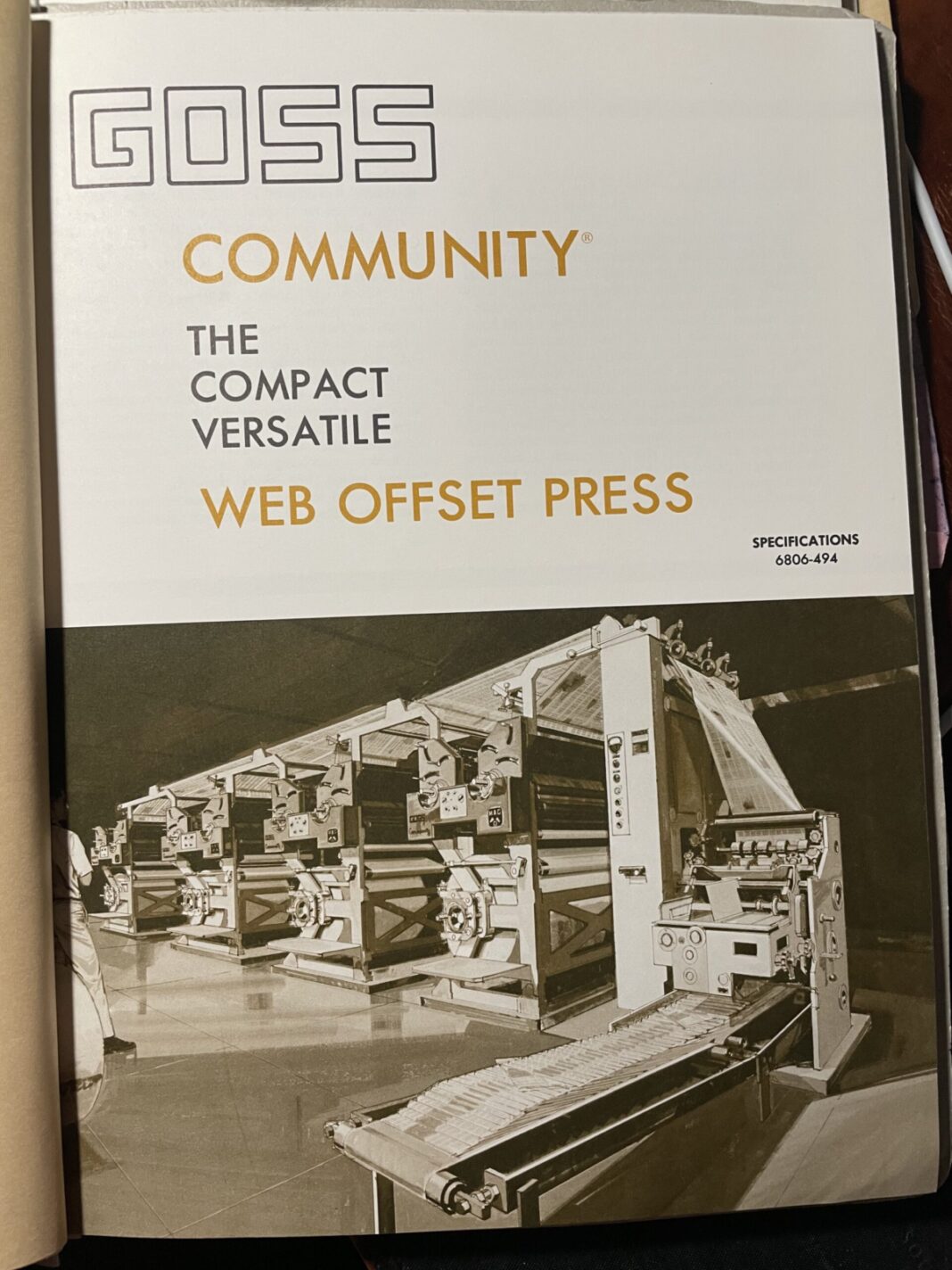Reported by Mike Hobson
June 7, 2024
The Centreville Press has been producing a rural community newspaper in Bibb County, Alabama since the 19th century and remains one of the oldest continuous publications in the State. History dates the first publication to 1880. The Alabama Department of Archives and History reveals that there were multiple newspapers being printed in Bibb County in that historic era.
Some of the publication names that you may have never heard of included the Bibb County News, the Blocton Reflector, the County Press, State Central Express, the Eoline Messenger, the Central Enquirer, and the Bibb Blade.
Newspapers of Bibb County Alabama
The best contemporary remembrance of these defunct publications was the Bibb Blade. In 1936 Mr. Frank Gist wrote about his newspaper experiences in a letter to the Centreville Press editor. Gist recalled that he and his father published the Bibb Blade in Six Mile beginning in 1881. He said the Blade was founded by Frank P. Glass and operated originally from the Glass Store in Six Mile, then was purchased by Pratt and Suttle and published from the rear of their Six Mile store.
The publication was moved to Centreville in 1888 and moved again to Blocton under new owners in 1892, according to Gist. Eventually, the Bibb Blade would be acquired by the owners of the Centreville Press. Some original copies of the Bibb Blade are still preserved today in Centreville Press archives.
In a memorandum found among his possessions by his grand daughter Melanie, James W. Oakley Sr. wrote of his sudden introduction to the newspaper business when his father, O.C. Oakley, purchased the Centreville Press from Mrs. L.H. Nunnelee. The year was 1927 and Oakley was still in high school, having reached the tender age of 16 years. The Oakley family took over the operation of the newspaper on July 1 of that year and Jim Sr. packed off to a training class in New Orleans. He journeyed to learn the Linotype process while his mother ran the business office and produced the newspaper.
Oakley (James W. Oakley Sr.-1911-1972) wrote that the Press had acquired a Mergenthaler linotype machine two years earlier. After 7 months of training Oakley returned to Centreville in 1928 and plunged into operating the newspaper, only to face the stock market crash and the Great Depression less than a year later.
Jim Oakley Sr. welcomed his son Jim Oakley Jr. into the newspaper business when he graduated from the University of Alabama and returned to Bibb County in 1958 at the age of 23. He was soon in charge of the newspaper and ran it successfully for the next three decades.
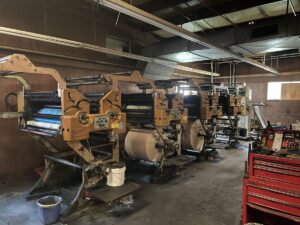
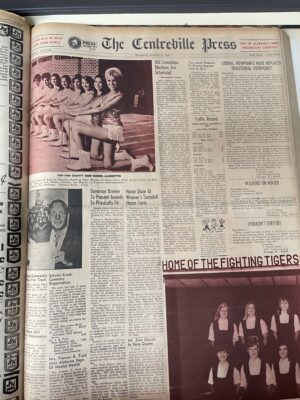
In 1969 the Oakley’s erected a metal building addition to the Centreville Press operation and purchased a three unit Goss Community Press with a mechanical folder, from the Goss Company of Chicago, IL. The first edition of the paper to roll off of these new offset presses arrived on August 21, 1969. A native of Germany worked for Goss and stayed in Centreville for months to install and calibrate the new printing presses. These huge printing presses would stay in operation over a span of 46 years.
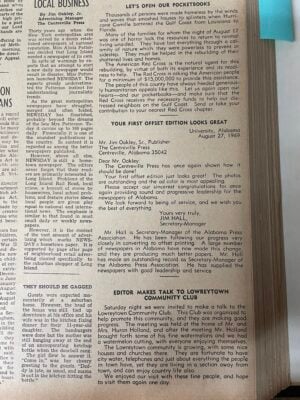
The Centreville Press was sold to out of state investors in 1985 according to Mike Oakley, son of Jim Jr. and Oakley Jr. moved on to a career of teaching journalism at the University of Alabama.
Much to the newspapers detriment, the Press remained under the control of absentee management for the next 35 years. Readership declined during that period and the newspaper seemed to lose sense of its community roots.
The editorial philosophy changed dramatically when the Press was purchased by the current owners in 2021.
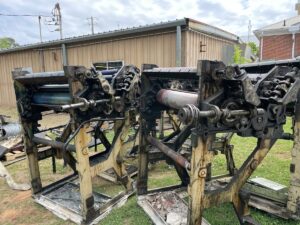
Local print production came to a halt in 2015 as the costs of maintenance and production finally brought local printing to a close. After nearly 10 years of mechanical silence the current Centreville Press owners have removed the last vestiges of the Goss printing presses from the metal building where newspapers were last produced. The Goss Community Press machinery has been removed to reclaim building space and is destined for metal recyclers. As the cost of print production continued to climb the newspaper reached a point that local production was no longer economically feasible and contracted with another print house to produce the weekly editions.
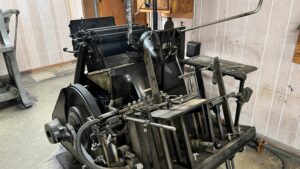
Still in place and operable the Centreville Press retains a historic Heidelberg Press that was used for job printing or custom print jobs. The Heidelberg Press holds a significant place in the history of the newspaper print industry, particularly in the context of offset printing technology. Developed by the German company Heidelberger Druckmaschinen AG, the Heidelberg Press revolutionized the newspaper printing process and played a crucial role in the mass production of newspapers worldwide.
Before the advent of offset printing, newspapers were primarily printed using letterpress or other manual methods, which were time-consuming and limited in their efficiency. Offset printing, which the Heidelberg Press specialized in, introduced a more streamlined and cost-effective printing process.
CHANGING TIMES IN THE NEWSPAPER INDUSTRY
The decline of newspaper print publishing in the United States has been a significant trend over the past few decades, marked by a myriad of factors that have reshaped the media landscape. While newspapers once held a central role in informing the public and shaping public opinion, their dominance has steadily eroded, giving way to digital alternatives and changing consumer behaviors.
One of the primary drivers of this decline is the advent of the internet and digital technology. With the rise of online news sources and social media platforms, consumers now have instant access to a vast array of information at their fingertips. This accessibility has led to a shift in how people consume news, with many opting for free online content over traditional print newspapers. As a result, newspaper circulation and advertising revenues have plummeted, putting immense financial pressure on print publications.
Furthermore, the rise of digital advertising has further exacerbated the decline of print newspapers. Advertisers increasingly favor online platforms due to their ability to target specific demographics and measure the effectiveness of their campaigns in real-time. This has led to a decline in advertising revenue for print newspapers, which historically relied heavily on advertising to sustain their operations.
Consolidation within the newspaper industry has also played a role in the decline of print publishing. Many newspapers have been forced to merge or shutter their operations altogether in response to declining revenues. This consolidation has led to fewer options for consumers and reduced competition within the industry, further accelerating the decline of print newspapers.
Changing demographics and consumer preferences have also contributed to the decline of print publishing. Younger generations, in particular, are less likely to subscribe to print newspapers, preferring to get their news from digital sources. Additionally, as more people move to urban areas, newspapers in rural communities have struggled to maintain readership and relevance.
- According to the University of North Carolina School of Journalism’s research, more than 2,100 newspapers have closed since 2004, with many of these closures occurring in rural areas.
- The Pew Research Center reports that newspaper circulation in the United States has declined by over 30% since 1990, with rural newspapers experiencing similar or even greater declines.
- A study by Penelope Muse Abernathy at the University of North Carolina found that more than 1,300 communities have lost local news coverage altogether, often leaving rural areas particularly underserved.
- The decline of rural newspapers has been exacerbated by the loss of advertising revenue, with many local businesses shifting their advertising budgets to digital platforms or larger regional newspapers.
- Pew Research Center: Pew has conducted extensive research on the decline of newspapers in the United States. Their report titled “The Decline of Newspapers and the Rise of Digital Media” provides valuable insights into the factors contributing to the decline of rural newspapers.
The decline of print newspapers has had far-reaching implications for society as a whole. With fewer resources dedicated to investigative journalism and local news coverage, there is a risk of a decline in accountability and transparency at both the local and national levels. Furthermore, the loss of print newspapers has led to job losses within the industry, impacting journalists, editors, and other newspaper staff.
Despite the challenges facing print newspapers, some publications have managed to adapt to the changing landscape by embracing digital technologies and diversifying their revenue streams. Many newspapers now offer digital subscriptions and have invested in online platforms to reach new audiences. However, the transition from print to digital has not been without its challenges, and many newspapers continue to struggle to find a sustainable business model in the digital age.
In the face of challenges of the industry the Centreville Press continues to provide a weekly printed news edition for its loyal readers. At the same time, the Press engages a website for digital news and utilizes social media platforms to announce breaking news and full article availability. After 144 years of continuous publication, the owners of the Centreville Press plan to continue publishing a community newspaper, in print and digital formats, as long as the community continues to support the product.
If you would like to see a video interview of James W. Oakley Jr. talking about his recollections of publishing a newspaper for over 30 years you can find it on our website. Click on


